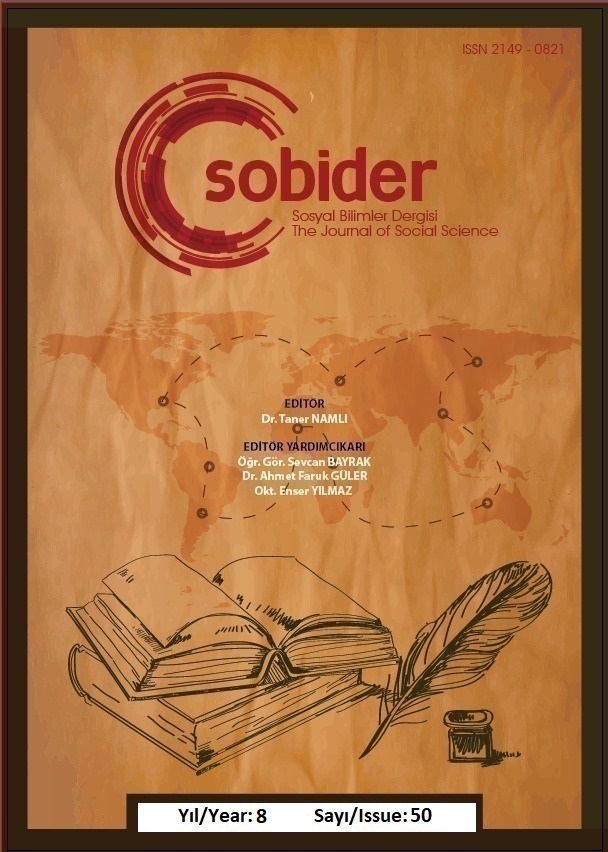Author :
Abstract
Elit düzeyde kadın voleybolcuların kuvvet antrenmanlarında uygulanan (haftada 3 gün, 8 hafta) geleneksel yöntemler ile bir egzersizden sonra nöromüsküler sistemin akut bir uyarılması anlamına gelen PAP antrenman yönteminin dikey sıçrama, çeviklik ve smaç hızına etkisi araştırılan bu çalışmada, Sultanlar Kadın Voleybol Liginde oynayan iki İstanbul kadın voleybol takımının 26 oyuncusu katılmıştır. Yaşları 29,08±5,45, boyları 1,86±0,06 ve beden ağırlıkları 68,81±5,57 olup, gruplar arasında anlamlı farklılık yoktur (p>0,05). Haftada 3 gün 8 haftalık çalışma sonunda PAP antrenman etkisini karşılaştırmak için T Testi, Sıçrama ve Smaç hız ölçümleri uygulandı. Denek grubunda T Testi, Kollar Serbest ve Tek Sol Bacak ön ve son test ölçümleri arasında, kontrol grubunda T Testi, Adım Sıçrama, Eller Belde, Tek Bacak Sol ve Smaç Hız ön ve son test ölçümleri arasında anlamlı bir farklılık hesaplanmıştır (p<0,05). Her iki takımın ön ve son test ölçümlerinin karşılaştırılmasında ise sadece Smaç hız ön ve son testinde anlamlı farklılık bulunmuştur (p<0,05).
Keywords
Abstract
In this study, which investigates the effect of PAP training method, which means an acute stimulation of the neuromuscular system after an exercise with traditional methods (3 days a week, for 8 weeks) applied in strength training of elite female volleyball players, on vertical jump, agility and spike speed, 26 players of the two Istanbul women's volleyball team, playing in the Sultans Volleyball League, participated. Their age was 29,08 ± 5,45, their height was 1,86 ± 0,06, and their body weight was 68,81 ± 5,57, and there was no significant difference between the groups (p>0,05). At the end of the 8-week study, 3 days a week, T Test, Jump and Spike speed measurements were applied to compare the effect of PAP training. A significant difference was calculated between T Test, Free Arms and One Left Leg pre and post test measurements in the subject group, and T Test, Step Jump, Hands on Waist, One Leg Left and Spike Speed pre and post tests in the control group (p <0,05). In the comparison of the pre and post test measurements of both teams, a significant difference was found only in the Spike speed pre and post test (p <0,05).
Keywords
- Baacke, H. (1997). Voleybol Antrenmanı. Üst Düzey Koç ve Takımlar El Kitabı. 1. Baskı, (Çev. Ekim Pekünlü), İstanbul: Voleybol Antrenörleri Derneği.
- Beal, D. ve Murphy, P. (1989) Seoul 88 The Will to Win Flexibility and Power Netplay. Volleyball Tech; 1 (89).
- Brzycki, M. (1993) Strength Testing-Predicting A One-Rep Max From Reps-To-Fatigue. JOPERD, 68.
- Chatzopoulos, D., Michailidis, C.J., Giannakos, A.K. ve Alexiou, K.C. (2007). Postactivation Potentiation Effects After Heavy Resistance Exercise on Running Speed. December, The Journal of Strength and Conditioning Research 21(4). DOI: 10.1519/R-21276.1
- Clarke, D.H. (1975). Exercise Physiology. Englewood Cliffs, N. J.: Prentice-Hall.
- Coleman, S.G.S., Benham, A.S. ve Northcott, S.R. (1993). A Three-Dimensional Cinematographical Analysis of the Volleyball Spike. J Sports Sci, 11.
- Desmedt, J.E., ve Hainaut, K. (1968). Kinetics of Myofilament Activation in Potentiated Contraction: Staircase Phenomenon in Human Skeletal Muscle. Nature. Feb 10: 217 (5128). DOI. 10.1038/217529a0.
- Ergun, N. ve Baltacı, G. (2006). Spor Yaralanmalarında Fizyoterapi ve Rehabilitasyon Prensipleri. Ankara: Hacettepe Üniversitesi Fizik Tedavi ve Yüksekokulu Yayınları.
- Fatouros, I.G., Jamurtas, A.Z., Leontsini, D., Taxildaris, K., Aggelousis, N., Kostopoulos, N. ve Buckenmeyer, P. (2000). Evaluation of Plyometric Exercise Training, Weight Training, and Their Combination on Vertical Jumping Performance and Leg Strength. J Strength Cond Res, 14.
- Fröhner, B. (1999). Voleybol Oyun Kuramı ve Alıştırmaları. Ankara: Bağırgan Yayınevi.
- Hanada, K., Nishijima, M., Fujita, T. ve Kobayashi, S. (2000). Specificity of Inhibitors of Serine Palmitoyltransferase (SPT), A Key Enzyme in Sphingolipid Biosynthesis, in Intact Cells - A Novel Evaluation System Using an SPT-Defective Mammalian Cellmutant. Biochemical Pharmacology: 59.
- Herzog, W. (1996). Muscle Function in Movement and Sports. The American Journal of Sports Medicine, 24:6.
- Hodgson, M., Docherty, D. ve Robbins, D. (2005). Post-Activation Potentiation: Underlying Physiology and Implications for Motor Performance, Sports Medicine, 35(7).
- Korkmaz, F. (2003). Voleybol Teknik Taktik. 1. Baskı. Bursa: Ekin Kitapevi.
- Lima, LC., Oliveira, F.B., Oliveira, T.P., Assumpcao, C.O., Greco, C.C., Cardozo, A.C. ve Denadai, B.S.. (2014). Postactiation Potentiation Biases Maximal Isometric Strength Assessment, BioMed Research International. 2014:126961. DOI. 10.1155/2014/126961.
- Paasuke, M., Ereline, J. ve Gapeyevea, H. (1996). Twitch Potentiation Capacity of Plantar- Flexor Muscles in Endurance and Power Athletes. Biol. Sport. 15(3).
- Pauole, K., Madole, K., Garhammer, J., Lacourse, M. ve Rozenek, R. (2000). Reliability and Validity of the T-test As a Measure of Agility, Leg Power, and Leg Speed in CollegeAged Men and Women. The Journal of Strength & Conditioning Research 14(4).
- Rassier, D.E. ve Macintosh B.R. (2000). Coexistence of Potentiation and Fatigue in Skeletal Muscle. Braz. J. Med. Biol. Res. 33(5). DOI: 10.1590/s0100-879x2000000500003
- Sale, D.G. (2002). Post Activation Potentiation: Role in Human Performance. Exercise. Sport Sci Rev. 30(3).
- Sheppard, J.M. ve Young, W.B. (2006). Agility Literature Review: Classifications, Training and Testing. Journal of Sports Sciences, 24(9).
- Temoçin, S., Ek, R.O. ve Tekin, T.A. (2004). Futbolcularda Sürat ve Dayanıklılığın Solunumsal Kapasite Üzerine Etkisi. Ankara: Üniversitesi Spormetre Beden Eğitimi ve Spor Bilimleri Dergisi, Cilt: 2, Sayı: 1.
- Tillaar, R.V.D. ve Heimburg E.V. (2017). Comparison of Different Sprint Training Sessions with Assisted and Resisted Running: Effects on Performance and Kinematics in 20-m Sprints. January, Human Movement 18(2). DOI: 10.1515/humo-2017-0013.
- Tillin, N.A. ve Bishop, D. (2009). Factors Modulating Post-Activation Potentiation and its Effect on Performance of Subsequent Explosive Activities. Sports Medicine 39(2). DOI: 10.2165/00007256-200939020-00004.
- Turner, A. (2011). Defining, Developing and Measuring Agility. UK Strenght and Conditioning Association, 22.





